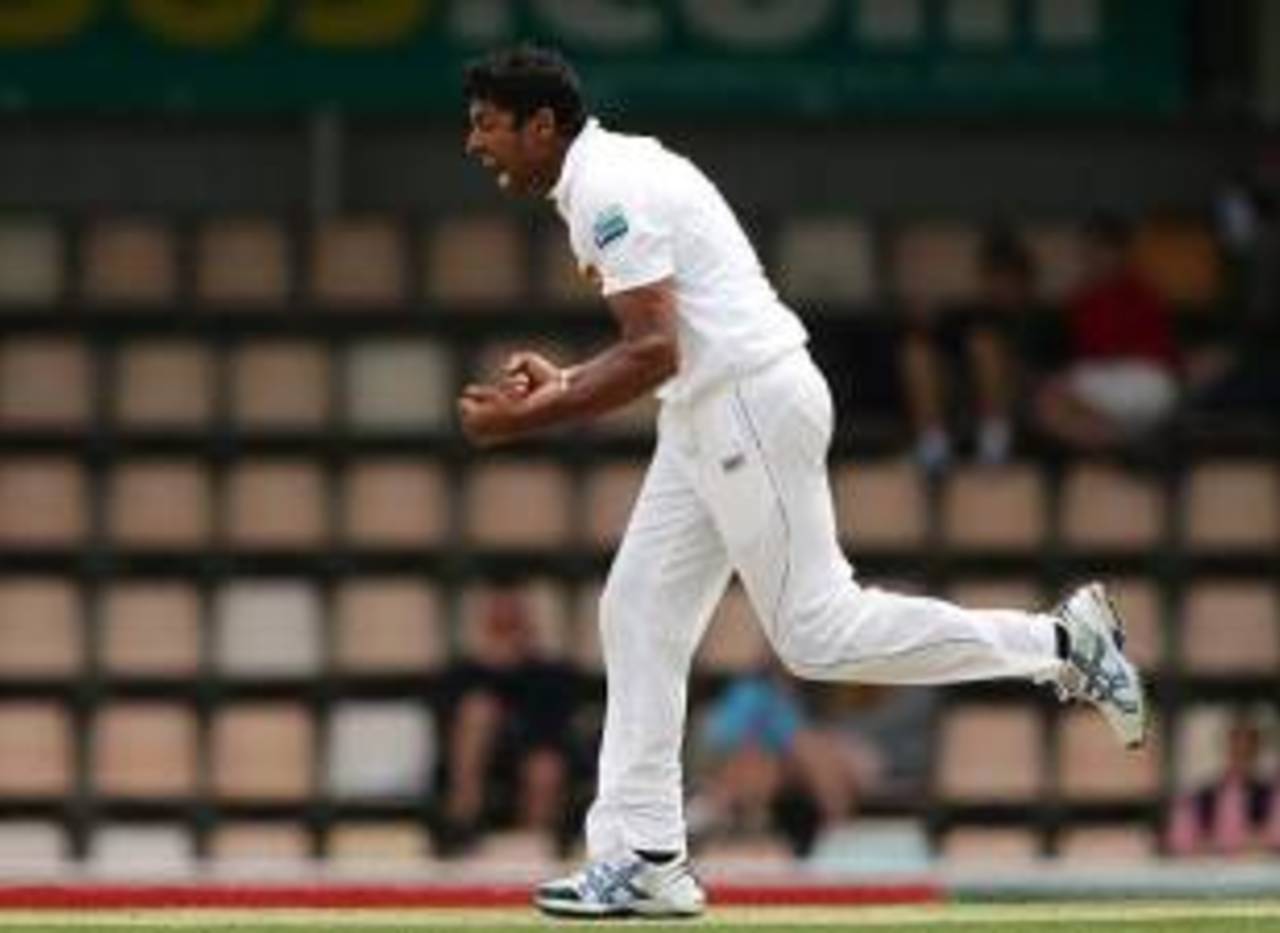In the weeks leading up to the Australia tour, Sri Lanka have been under no illusions about the lack of venom in their attack, nor has their captain been given to pretense. Rodney Hogg's ill-researched disparagement of Sri Lanka's fast men may have been dispelled to some extent by Australia's inability to dominate - even with their naturally aggressive top order - but the majority of the more moderate views voiced before the Test proved accurate: this is not a pace attack that Australia need to fear. Men on the square fence in the first session of the
Hobart Test and a quickly-thinning slip cordon betrayed the visitor's own estimation of their bowling.
Bereft of canines capable of tearing into a fresh Australian top order, Sri Lanka gummed at the hosts for large periods, making Australia's day less pleasant than it could have been at times, but never worrisome. There were stretches of good pressure, particularly soon after lunch and later after Phil Hughes' dismissal, but these did not extend long enough to exact the clatter of wickets they required to take the hosts by the scruff.
There were balls that beat the bat, others that passed perilously by the stumps and still more whose unsuspected bounce and speed caused physical discomfort to Australia's batsmen, but these victories were not pursued far beyond their inception.
Shaminda Eranga hit Michael Clarke in the thigh with the second new ball, and although Clarke was in some visible distress - limping singles and hobbling about the crease - neither Eranga nor his fast-bowling team-mates tested the extent to which Clarke was inhibited by the injury. A sustained spell of short bowling might have seemed like a waste of a new ball, but a batsman in pain would have had a Dale Steyn or a Morne Morkel adopt their most vicious lengths. Perhaps
Nuwan Kulasekara doesn't have the pace to pull off a short-pitched barrage, but Eranga was regularly faster than 140kph and
Chanaka Welegedara's pace improved as the day wore on. Clarke is likely to come back healed and rested tomorrow, and the opportunity will have been missed.
Each fast bowler delivered at least one good spell during the day, but their peaks arrived in single file. Too often one bowler built pressure from one end, but his team-mate released it from the other. In the morning Kulasekara had the ball moving away from the three top-order left-hand Australia batsmen, but Welegedara was wayward - going at around a run-a-ball, and Eranga was underwhelming. After lunch Welegedara rectified his line and increased his pace, but found Kulasekara could do little from the other end once the swing had disappeared.
It is an inexperienced attack, and these three fast bowlers have never appeared in a Test match together, but they must quickly learn to hunt as a pack if their team is to compete in Australia. They will feel that they bowled better than their collective return suggests - and there is truth to that belief, as Australia's progress was never that easy. But if one bowler cannot step up to support another who is going well, spells of the quality that were being produced intermittently today, will continue to go unrewarded.
"I thought if we got about six wickets today, we would have a good chance in the Test," Welegedara said at the end of the day's play. "In the morning we didn't get much from the wicket, but after lunch we got a good advantage from the wicket, and I thought we could have made more of that than we did. If we had bowled in partnerships, I think we could have done better, but I'm confident we can do that tomorrow, because we know how the pitch plays now."
Mahela Jayawardene had correctly noted before the series that without a fast bowler of exceptional menace, discipline and patience would be Sri Lanka's surest route to success. But unlike raw pace and hooping movement, those virtues cannot waiver, and require lengthy application if they are to yield wickets. It was clear that Sri Lanka's bowlers were in agreement with their captain, but they only delivered his plan in bursts on the first day, and Australia's batsmen were largely good enough to weather the difficult periods, then gather pace when respite was given.
Sri Lanka must now separate Michael Clarke and Michael Hussey on day two to prevent an Australian total as monstrous as the pair's form has been in the last 12 months. Their unbeaten century stand as stumps drew close on day one was almost a matter of habit. It is some time before Rangana Herath becomes a force in this match, and the visitors cannot wait for his mastery to come good, as it often does in the first innings at home.
"They batted well today, but the day is over and Clarke will have to start again tomorrow," Welegedara said. "Our bowlers will be fresh in the morning and if we can get him out early, we can keep them to fewer than a 100 more runs."
On day one, Sri Lanka's bowlers may have exceeded the extremely low expectations that men like Rodney Hogg had of them but, as a side aiming to leave Australia with a victory, they cannot be satisfied with just that. Their whole must be greater than the sum of their parts, and significant improvement is required to achieve that end.
Andrew Fernando is ESPNcricinfo's Sri Lanka correspondent
